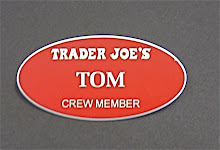Today we end our Napa adventures. We’re taking another wine blending session, but different in format. Our experience at Paraduxx was formulaic and represented the Paraduxx blending style and varietals Zinfandel, Cabernet, and Merlot. Today we're at Conn Creek Winery on the Silverado Trail.
The set-up at Conn Creek is different. First, they use all five Bordeaux varietals in their flagship wine “Anthology.” They also produce single varietal Cabernet Sauvignons from different vineyards and viticulture regions and they also produce a Cabernet Franc.
When we arrived for our 10:30 a.m. appointment, we were greeted by Wine Educator Jessica, who escorted us to their AVA (American Viticulture Area) Room for our barrel and blending experience.
The AVA room is beautiful. Granite floor, beautiful wood tables and elegant sconces. Along the wall to our right, as we entered, were 15 barrels of 2007 Cabernet Sauvignon, each from a different AVA in Napa. Along the wall to our left, were four barrels, one each of Merlot, Cabernet Franc, Malbec, and Petit Verdot.
On the table were three settings. Jessica explained that our first step was to become familiar with the different Cabernets and the other four varietals. The 15 barrels of Cabernet were divided into five groups of three Cabs each. The five descriptive signs for the groupings were “soft, supple, complex, rich, and bold.” The name of the vineyard, its microclimate, and a sample of the AVA’s soil is displayed.
We grabbed our wine glasses and began tasting, assigning a score, and making notes on each Cabernet. It should be added that we did not get hammered! When sipping that many wines, the smallest of portions is taken; just enough to get an initial sense of the aroma, taste, and feel. We then re-tasted those that were of further interest.
The Cabernets had been in barrel for almost one year and had transformed somewhat since being barreled. For example, one of the”soft” cabs, I scored as fairly “bold” with medium to heavy tannins.
Next, we turned to the four barrels on the opposite wall. Again, there were alterations from what I would consider typical varietal characteristics. The Petit Verdot was soft, smooth, and almost without tannins while the Merlot had medium tannins. I would have guessed the exact opposite.
Before we started our sampling, Jessica had provided several of the Conn Creek wines for tasting. I loved the Anthology blend and had decided to use it as a template for my own blend, but with changes. The sampled Anthology was comprised of 76% Cabernet, 10% Merlot, 8% Malbec, 4% Petit Verdot, and 2% Cab Franc.
First, we each had to decide how many of the Cabs to use; just one or a blend of two or more, and at what ratio? For my blend, I decided upon a Yountville Cab from the “soft” group, the one that had morphed into a heavier version. My second Cab was a Calistoga from the “Bold” group. I blended them equally and that blend represented 70% of my finished product (35% of each) per the 100 ml container we used for measuring the blend.
Then, because the Petit Verdot had softened too much for my palette, I decided to not include it and instead went with 10% each of the Merlot, Malbec, and Cab Franc. My 100 ml container was now full. I took my first taste and was excited by what I had created! It had all come together better than I had anticipated, and I actually preferred it to the Anthology (I won’t mention that to the winemaker, Mike McGrath).
Jessica tasted it and she agreed that it was brilliant (okay, my word not hers) but she was impressed with the final blend but it became apparent that she and I had very similar palettes and preferences for the heavier, bolder style of wine.
My companions finished their initial blends, made any adjustments they wanted and then we were ready to prepare enough for bottling (mine was the best, of course, I say modestly,but all were very good).
Using a conversion table provided by Jessica, we were able to convert the 100 ml formula into a 750 ml formula for bottling. Once we had our 750 mls, we used a funnel to bottle our blends and then put the bottle and a cork into a manual corking machine that forced the cork into the bottle. Then we each created a label for our bottles. Mine was named “Tom’s Choice,” my wife Jacquie named hers “IBA” (Inspired By Angels) and my brother-in-law, Glenn labeled his “Le Gem Blend.”
The cost for the two-hour session was $95 dollars each,but we learned a lot, had a fabulous time, played “winemaker for a day,” and each walked away with a bottle of wine. Jessica cautioned that because sulfites were not added, we should drink the wine within eight months or risk oxidation.
The blending sessions are offered twice daily at 10:30 a.m. and at 2:00 p.m., by reservation only. Any of you who visit Napa should visit Conn Creek, and while in the Tasting Room, look for Wine Educator, Marion Hoel. We met her on an earlier trip and she’s really fun and knows her wines. And she has a great smile.
As you can determine from the descriptions of the blendings at Paraduxx and Conn Creek, the two sessions are quite different, but both very worthwhile and educational. The Paraduxx session would probably be easier for those with limited tasting experience as sifting through 19 barrels of wine and deciding how to select a blend might be intimidating for the less experienced. But the people who work at Conn Creek are friendly and will assist and accommodate anyone at any level of experience.
For more information go to their website, wwwconncreek.com or call 1-800-793-7960.
So ends our Napa experience....sniff, sniff.
Tom da Wine Guy

